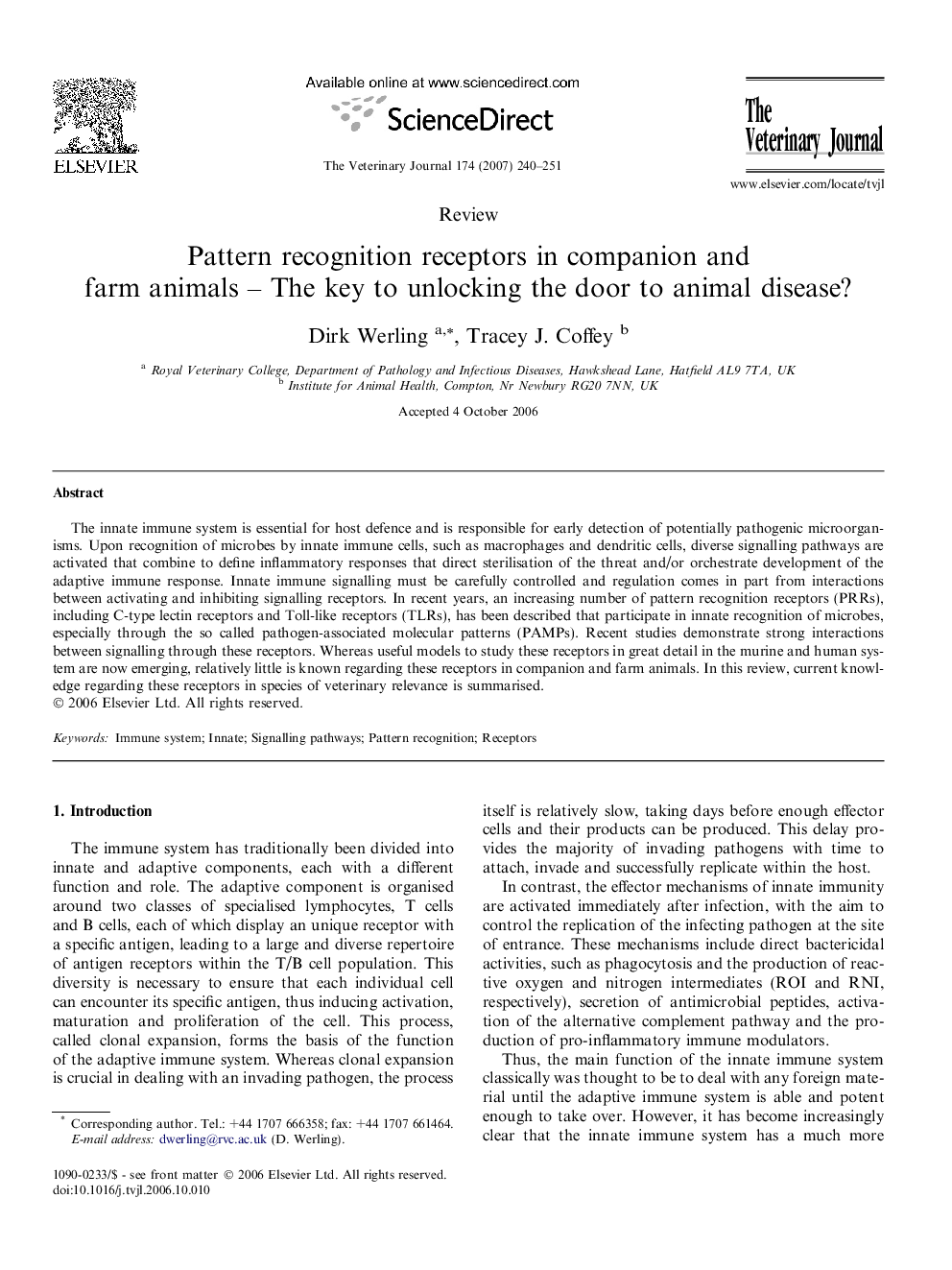| Article ID | Journal | Published Year | Pages | File Type |
|---|---|---|---|---|
| 2465568 | The Veterinary Journal | 2007 | 12 Pages |
The innate immune system is essential for host defence and is responsible for early detection of potentially pathogenic microorganisms. Upon recognition of microbes by innate immune cells, such as macrophages and dendritic cells, diverse signalling pathways are activated that combine to define inflammatory responses that direct sterilisation of the threat and/or orchestrate development of the adaptive immune response. Innate immune signalling must be carefully controlled and regulation comes in part from interactions between activating and inhibiting signalling receptors. In recent years, an increasing number of pattern recognition receptors (PRRs), including C-type lectin receptors and Toll-like receptors (TLRs), has been described that participate in innate recognition of microbes, especially through the so called pathogen-associated molecular patterns (PAMPs). Recent studies demonstrate strong interactions between signalling through these receptors. Whereas useful models to study these receptors in great detail in the murine and human system are now emerging, relatively little is known regarding these receptors in companion and farm animals. In this review, current knowledge regarding these receptors in species of veterinary relevance is summarised.
